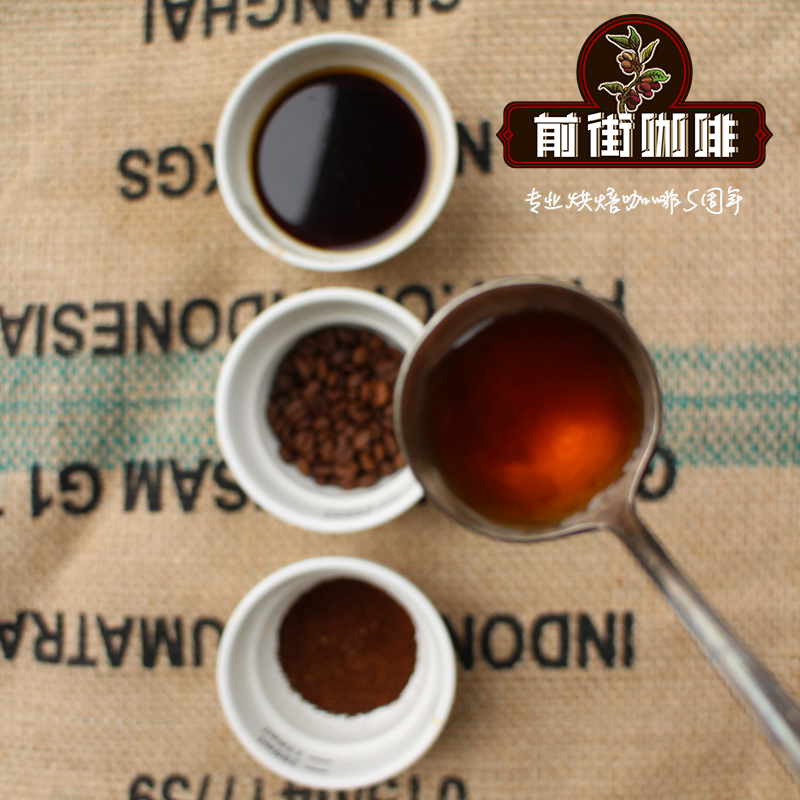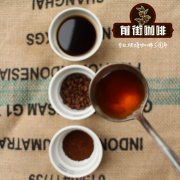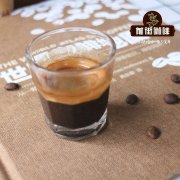Introduction of 14-mesh washed pearl beans and PB coffee varieties in LYNN Manor, Guatemala

Professional coffee knowledge exchange more coffee bean information please follow the coffee workshop (Wechat official account cafe_style)
Production area information:
SanMarcos San Marcos
Guatemala has the warmest climate and the heaviest rainfall in the coffee producing areas. The hillside facing the Pacific Ocean was the first to get Rain Water, so it blossomed relatively early. There is plenty of rain and it tends to blossom as soon as it rains. The level of coffee in this region fluctuates greatly, which is closely related to the post-harvest treatment. At the same time, abundant rainfall brings challenges to the drying process after harvest. Due to a lot of rain, and coffee harvest is still redundant, sun drying depends on luck. Therefore, some coffee plantations use both natural drying and mechanical drying. The coffee in this area, at high altitude, has obvious acidity and sweetness. if the coffee berries are handled properly, they will have quite full and unique aromas.
Altitude: 1300-1800 m
Harvest time: December-March of the following year
Varieties: bourbon, Kaddura, Kaduai
Acatenango Akernango
The coffee growing area is concentrated in the Acatenango River Valley, named after the volcano here. In the past, coffee producers would sell coffee to "coyotes" (coffee buyers, known as coyote, drive trucks everywhere to buy coffee fruit in cash), and they would ship the coffee fruit to Antigua for processing. Antigua's coffee has a high reputation, so it can also get a higher price. However, this practice is relatively rare now, because Acatenango's own coffee is also good and widely recognized. Now it is possible to make a higher profit because of its production and marketing experience. The coffee produced is usually high in acidity and rich in layers.
Altitude: 1300-2000 m
Harvest time: December-March of the following year
Varieties: bourbon, Kaddura, Kaduai
Coban class
The name of this area comes from Coban city. The city flourished as a result of the growth of powerful German coffee producers, and the influence did not fade until the end of World War II. The dense rainforest here also means wet weather, which poses a challenge to the drying process of coffee. This area is remote, so transportation is difficult and the cost is high. But there are a lot of good quality coffee in the area. The rainforest brings a climate of low temperature, high rainfall and high humidity, resulting in the thick and uniform consistency of its coffee with fruit and slightly spicy aromas.
Altitude: 1300-1500 m
Harvest time: December-March of the following year
Varieties: bourbon, Marago Rippi, Kaddura, Kaduai, Patch
NuevoOriente New Oriental
Located in eastern Guatemala, near Honduras. The climate here is dry and most coffee is produced by small farmers. The coffee industry did not come to this region until the 1950s and developed relatively late.
Altitude: 1300-1700 m
Harvest time: December-March of the following year
Varieties: bourbon, Kaduai, Kaddura, Patch
Huehuetenango Vivette Nanguo
This is one of the more famous producing areas in Guatemala, and the pronunciation of the regional name is the most intriguing. The name comes from the Navat language Mahutl, which means "the land of the ancients / ancestors", where the climatic conditions are quite suitable for coffee cultivation. The economy of this area depends on coffee exports and produces a lot of amazing good coffee. The volcano-free Huehue Highlands is the highest in Guatemala, with little rainfall and a late harvest, resulting in a layered coffee with floral and fruity flavors. The acidity is mild and the touch is mellow.
Fraijanes Flajanes
The plateau, which produces Guatemalan coffee, surrounds the capital, Guatemala City. The soil in this area with frequent volcanic activity is very fertile, but it also occasionally has an impact on human safety and infrastructure. The soil is rich in pumice, which can even be ignited. Unfortunately, the planting area of coffee here has gradually shrunk due to the change of urban development land use rights. The coffee in this area belongs to the type of balanced flavor, but it has more unique aroma and flavor than Antigua.
Altitude: 1400-18001 m
Harvest time: December-February of the following year
Varieties: bourbon, Kaduai, Kaddura, Patch
Antigua Antigua
Antigua is the most famous coffee producing area in Guatemala and one of the most well-known coffee producing areas in the world. The name of the region comes from the city of Antigua and is listed as a World Heritage site by the United Nations Educational, Scientific and Cultural Organization (UNESCO) for its Spanish architectural civilization. Because of the abuse of the name Antigua in the market, the coffee in this producing area depreciated, so it became a legal producing area (Denomination of Origin) in 2000, and the whole people were "Genuine Antigua Coffee". Although this prevents other producing areas from selling coffee under the name of Antigua, it does not prevent fraudulent practices in which merchants buy fruits from other producing areas to deal with here. In spite of this, coffee in this region is easy to get a clear production and marketing resume, although some prices have been overbid, at that time the production area did produce high-quality coffee beans, it is worth a try. This area is the virgin place where coffee is produced in Guatemala. The climate is dry and the coffee is sweet with even nutty, spicy and chocolate flavors. One of Xing Dad's core beans in the Chinese market is made here. Quack--
Altitude: 1500-1700 m
Harvest time: January-March
Varieties: bourbon, Kaddura, Kaduai
Atitlan Atitlan
The coffee garden in this area is located around Lake Atilan. The rainfall is slightly more and the humidity is higher. The scenic lake area, located at 1500 meters above sea level, has deeply captured the hearts of writers & tourists over the years. A strong wind blows near noon and afternoon every day, which is locally known as "xocomil", which means "the wind that blows away sin". There are many private nature reserves in the area to protect the ecological diversity of the area and to prevent deforestation. Previously, the coffee ecology has been threatened, one of the reasons is rising labor costs and vicious competition. The expansion of urbanization has also put pressure on the land, and many farmers think it is more profitable to sell the land than to continue to grow coffee. The coffee produced in this region is recognized as a Guatemalan classic: bright, with lemon and chocolate flavors, thick and easy to taste. The aroma is obvious, acidity is proportional to altitude, and some areas are unique, with chocolate and spice flavors. Quality has great ups and downs.
Altitude: 1500-1700 m
Harvest time: December-March of the following year
Varieties: bourbon, Tibika, Kaddura, Kaduai
END
Important Notice :
前街咖啡 FrontStreet Coffee has moved to new addredd:
FrontStreet Coffee Address: 315,Donghua East Road,GuangZhou
Tel:020 38364473
- Prev

Guatemala Antigua San Jose Manor Information_San Jose Manor Coffee Beans How to brew?
Professional coffee knowledge exchange More coffee bean information Please pay attention to Coffee Workshop (Weixin Official Accounts cafe_style) Guatemala Coffee Manor: San Jose Manor is located in Antigua, which is famous for growing the best coffee in the world; the estate is located in San Juan Alotenango area and managed by Hermnandez family. Don Adolfo
- Next

Guatemala San Isabel coffee beans good? Santa Isabel Coffee House Information
Weixin Official Accounts cafe_style Santa Isabel Estate is located in the northern part of Alta Verapaz in the province of San Cristbal in Guatemala, surrounded by extraordinary mountains, rainforests and impressive vegetation, close to the class that produces extremely hard beans. The estate is 4500 meters (1,372 m) above sea level
Related
- Detailed explanation of Jadeite planting Land in Panamanian Jadeite Manor introduction to the grading system of Jadeite competitive bidding, Red bid, Green bid and Rose Summer
- Story of Coffee planting in Brenka region of Costa Rica Stonehenge Manor anaerobic heavy honey treatment of flavor mouth
- What's on the barrel of Blue Mountain Coffee beans?
- Can American coffee also pull flowers? How to use hot American style to pull out a good-looking pattern?
- Can you make a cold extract with coffee beans? What is the right proportion for cold-extracted coffee formula?
- Indonesian PWN Gold Mandrine Coffee Origin Features Flavor How to Chong? Mandolin coffee is American.
- A brief introduction to the flavor characteristics of Brazilian yellow bourbon coffee beans
- What is the effect of different water quality on the flavor of cold-extracted coffee? What kind of water is best for brewing coffee?
- Why do you think of Rose Summer whenever you mention Panamanian coffee?
- Introduction to the characteristics of authentic blue mountain coffee bean producing areas? What is the CIB Coffee Authority in Jamaica?

